Towing safety has become paramount in today’s automotive landscape, where recreational vehicle ownership and heavy hauling demands continue to surge.
The difference between a stable, controlled towing experience and a white-knuckle journey often comes down to one critical factor: trailer sway control.
This comprehensive guide examines the industry’s standout performers and disappointing underachievers in the realm of sway-control towing technology.
Modern pickup trucks represent sophisticated engineering marvels, integrating advanced electronic stability systems, powerful engines, and intelligent trailer management technologies.
However, not all trucks are created equal when it comes to managing the complex physics of trailer sway, that dangerous side-to-side oscillation that can transform a peaceful highway cruise into a potential catastrophe.
The stakes have never been higher, with Ford’s F-Series Super Duty capable of pulling an incredible 40,000 pounds when properly equipped, and manufacturers pushing towing capacities to unprecedented levels.
Trailer sway occurs when external forces wind gusts, passing semis, uneven road surfaces, or improper loading, disrupt the delicate balance between the tow vehicle and trailer.
The most common causes of sway are gusts of wind, drafts from passing semi-trucks, turns on curvy roads, and imbalanced loads in the trailer. What separates the best trucks from the mediocre is their ability to detect these disturbances early and respond with precision-engineered countermeasures.
The following analysis examines ten trucks across the spectrum of sway-control performance, providing detailed insights into their strengths, weaknesses, and real-world capabilities for serious towing applications.
5 Trucks with Exceptional Sway-Control Towing
These sophisticated pickup trucks feature integrated trailer sway control systems that automatically detect unwanted trailer movement and apply selective braking to individual wheels to maintain stability.
The Ford Super Duty also incorporates Trailer Sway Control, which detects trailer sway and automatically applies the brakes to stabilize the vehicle. This technology ensures safe and controlled towing, even when encountering challenging road conditions or strong winds.
Trucks equipped with Trailer Sway Control include models like the Ford F-150, Chevrolet Silverado 2500HD, and Ram 3500. These systems work in conjunction with electronic stability control and utilize advanced sensors to monitor vehicle dynamics continuously, intervening within milliseconds when trailer sway is detected.
The technology integrates seamlessly with the truck’s braking system, applying precise brake pressure to specific wheels while simultaneously reducing engine power to counteract dangerous oscillations.
These trucks provide confidence-inspiring towing stability that allows drivers to maintain control even in challenging crosswind conditions or emergency maneuvers.
1. Ford F-Series Super Duty (F-250/F-350/F-450)
The Ford F-Series Super Duty stands as the undisputed champion of controlled heavy-duty towing, representing decades of engineering refinement focused on trailer stability and driver confidence.
Ford’s commitment to towing excellence becomes immediately apparent through their comprehensive Trailer Backup Assist system, Pro Trailer Backup Assist technology, and the industry-leading Integrated Trailer Brake Controller that seamlessly coordinates truck and trailer braking forces.
At the heart of Ford’s sway-control superiority lies their advanced Trailer Sway Control system, which operates as an integral component of the Electronic Stability Control architecture.
This system continuously monitors vehicle dynamics through a network of sensors measuring yaw rate, lateral acceleration, steering wheel angle, and wheel speed.
When the system detects the onset of trailer sway, it immediately applies targeted braking to individual wheels while simultaneously reducing engine power output. The response time is measured in milliseconds, often intervening before the driver even perceives the sway condition developing.
The Super Duty’s chassis engineering provides the foundation for exceptional towing stability. The frame utilizes high-strength steel construction with specific reinforcements in critical load-bearing areas.
The rear suspension system features progressive-rate leaf springs with available options for auxiliary air springs that automatically adjust ride height and load distribution based on trailer weight. This dynamic load management ensures optimal weight transfer characteristics regardless of payload variations.
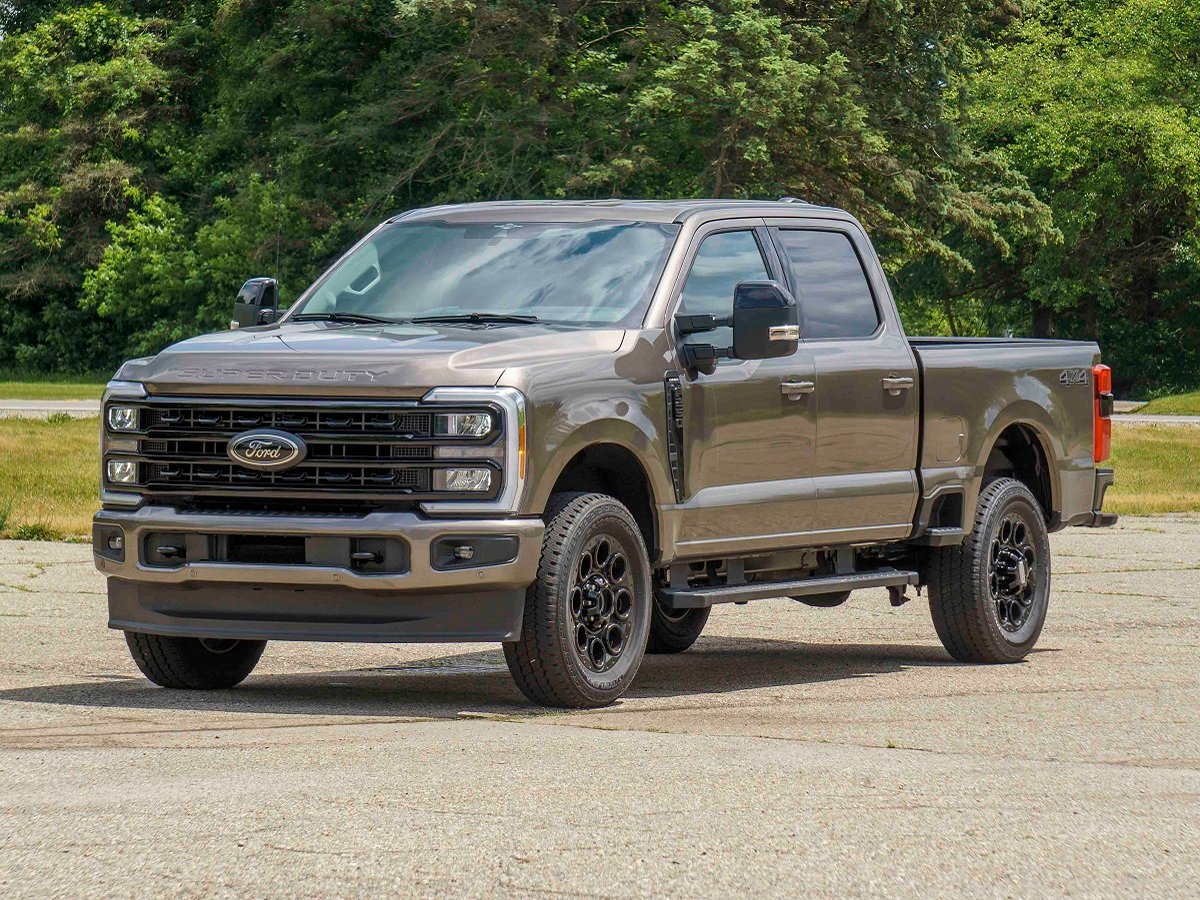
Ford’s commitment extends beyond hardware to comprehensive software integration. The FordPass Connect system provides real-time trailer monitoring, tire pressure surveillance for both truck and trailer, and even predictive maintenance alerts based on towing usage patterns.
The available 360-degree camera system with trailer-specific views eliminates blind spots during maneuvering, while the Pro Trailer Backup Assist allows precise trailer positioning using only the truck’s tailgate-mounted knob controller. Engine options reflect Ford’s understanding that controlled power delivery is essential for towing stability.
The 6.7-liter Power Stroke diesel produces 500 horsepower and an astounding 1,200 pound-feet of torque, but more importantly, it delivers this power through a carefully calibrated curve that prioritizes smooth acceleration and deceleration transitions. The available 7.3-liter gasoline V8 provides 430 horsepower with similar attention to linear power delivery characteristics.
Real-world performance validates Ford’s engineering approach. Professional haulers consistently report superior confidence when towing in challenging conditions, whether navigating mountain passes with severe crosswinds or managing heavy loads through urban traffic.
The system’s ability to maintain composure during emergency maneuvers, sudden lane changes, panic braking, or obstacle avoidance has earned recognition from commercial fleet operators who depend on consistent performance across diverse operating conditions.
2. Ram 2500/3500 Heavy Duty
Ram’s heavy-duty trucks represent a masterclass in integrating raw capability with sophisticated electronic oversight, creating a towing platform that excels in both maximum capacity scenarios and precision control applications.
The Ram 2500 and 3500 series have undergone continuous refinement, with the 2025 Ram 2500 featuring an updated turbodiesel engine for this year, with more power and torque, paired with a new eight-speed automatic transmission, demonstrating Ram’s commitment to advancing towing technology.
The cornerstone of Ram’s sway-control excellence lies in their Electronic Stability Control system, which has been specifically calibrated for heavy-duty towing applications.
Unlike systems that merely react to sway conditions, Ram’s approach emphasizes prevention through predictive algorithms that analyze road conditions, wind patterns, and trailer behavior to anticipate instability before it develops.
The system integrates seamlessly with the available air suspension, allowing real-time adjustments to vehicle height and load distribution that optimize trailer tracking characteristics.
Ram’s 6.7-liter Cummins turbo-diesel engine serves as more than just a powerplant; it functions as a critical component of the stability management system.
The engine’s exceptional low-end torque delivery, producing 1,075 pound-feet of torque as low as 1,600 RPM, provides the consistent power application essential for maintaining trailer control during grade changes and acceleration events.
The integrated engine brake system offers six levels of retardation force, allowing precise speed control during descents without relying solely on service brakes, which can induce trailer instability through uneven brake application timing.
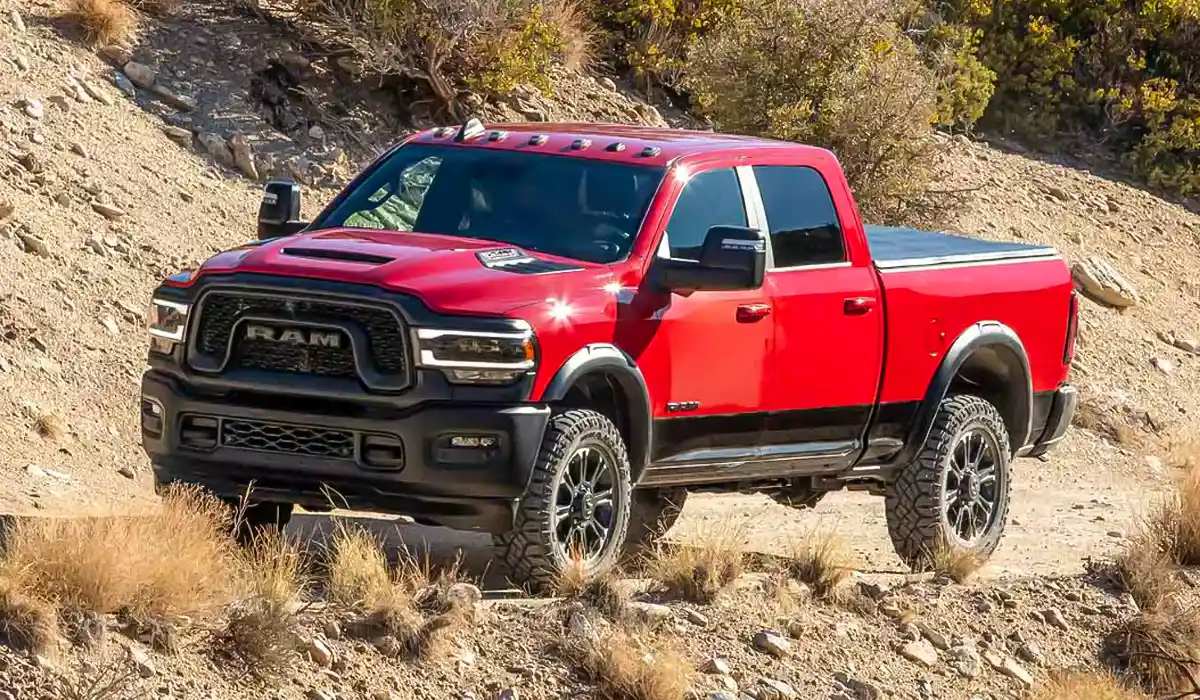
The chassis engineering reflects Ram’s understanding that towing stability begins with structural integrity. The frame utilizes a fully boxed design with strategic reinforcements at trailer hitch mounting points and throughout the rear suspension mounting areas.
The available rear air suspension system provides automatic load leveling, but more importantly, it offers dynamic damping adjustments that respond to changing trailer dynamics.
This active suspension management helps maintain optimal tire contact patches and prevents the bouncing or oscillating motions that can trigger trailer sway.
Ram’s approach to trailer brake integration sets new standards for coordinated stopping power. The integrated trailer brake controller doesn’t simply apply trailer brakes proportionally to truck brakes it actively manages the timing and force application to prevent brake-induced sway.
The system monitors individual wheel speeds on both truck and trailer, adjusting brake force distribution to maintain straight-line tracking during deceleration events.
This sophisticated brake management extends to emergency braking scenarios, where the system can delay full trailer brake application by fractions of a second to prevent jackknifing.
The truck’s aerodynamic design contributes significantly to towing stability through careful management of airflow around the trailer coupling zone. Ram’s engineers have paid particular attention to the area behind the cab, incorporating subtle design elements that reduce turbulence and minimize the aerodynamic disturbances that can affect trailer behavior.
The available spray-in bedliner and cargo management features are designed with airflow considerations, ensuring that practical truck functionality doesn’t compromise towing aerodynamics.
Professional validation of Ram’s towing capabilities comes from extensive use in commercial applications, where consistent performance under demanding conditions is essential.
Construction contractors, agricultural operators, and recreational vehicle enthusiasts consistently report exceptional confidence when operating Ram heavy-duty trucks in challenging towing scenarios, particularly praising the system’s ability to maintain composure during sudden weather changes or emergency maneuvering situations.
3. Chevrolet Silverado 2500HD/3500HD
Chevrolet’s Silverado HD series represents a sophisticated approach to heavy-duty towing that emphasizes seamless integration between mechanical excellence and electronic precision.
In 2025, the Silverado 2500 HD steps it up a notch with a 6.6-liter Duramax Turbo-Diesel V8 engine. This engine delivers up to 445 horsepower and 910 lb-ft of torque, providing the foundation for exceptional towing capability while maintaining the refined control characteristics essential for trailer stability.
The Silverado HD’s StabiliTrak Electronic Stability Control system has been extensively calibrated for towing applications, incorporating advanced algorithms that distinguish between normal vehicle dynamics and trailer-induced instability.
The system’s ability to differentiate between driver inputs and external forces allows it to respond appropriately to various towing scenarios without unnecessary intervention during normal driving conditions.
This calibration refinement means the system remains unobtrusive during routine towing while providing decisive action when genuine stability threats emerge.
Chevrolet’s approach to chassis engineering emphasizes rigidity and controlled flexibility, creating a platform that provides excellent feedback to both driver and electronic systems while maintaining the structural integrity necessary for heavy-duty applications.
The frame utilizes advanced high-strength steel construction with specific reinforcements at critical stress points, particularly around the receiver hitch area and rear suspension mounting locations.
This structural approach ensures that forces transmitted from the trailer are distributed evenly throughout the chassis, preventing localized stress concentrations that could affect handling characteristics.
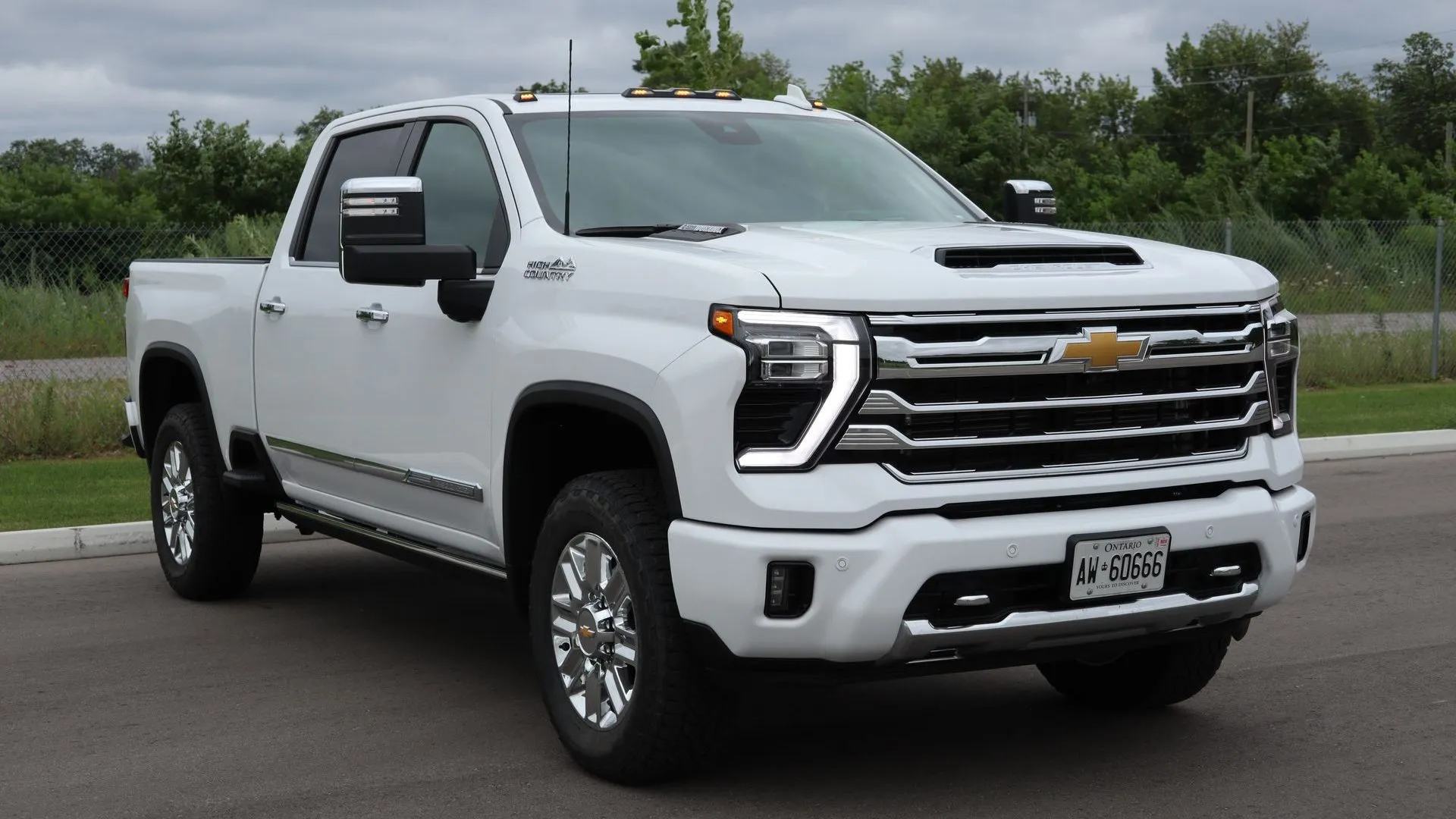
The Duramax diesel engine’s contribution to towing stability extends beyond raw power output to include sophisticated fuel delivery and turbocharger management systems that provide exceptionally smooth power application.
The engine’s ability to maintain consistent power output across a wide RPM range means that throttle inputs translate to predictable vehicle responses, eliminating the sudden power surges or drops that can disturb trailer tracking.
The integrated exhaust brake system provides engine-based retardation that works harmoniously with the service brakes to maintain controlled deceleration without inducing trailer sway.
Transmission technology plays a crucial role in Silverado HD’s towing excellence through the Allison 10-speed automatic transmission, which has been specifically calibrated for heavy-duty towing applications.
The transmission’s extensive gear ratio spread allows the engine to operate within its optimal power band regardless of load conditions or terrain, ensuring consistent power delivery that promotes trailer stability.
The transmission’s tow/haul mode doesn’t simply change shift points; it fundamentally alters the transmission’s behavior to prioritize smooth power transitions and engine braking effectiveness.
Chevrolet’s attention to trailer brake integration demonstrates its comprehensive understanding of towing dynamics. The integrated trailer brake controller system provides proportional brake application that’s coordinated with the truck’s braking system, but more importantly, it includes gain adjustment capabilities that can be fine-tuned for specific trailer characteristics.
The system monitors brake application pressure and automatically adjusts trailer brake timing to prevent the abrupt brake engagement that can trigger trailer sway during emergency stops.
The available rear axle options reflect Chevrolet’s commitment to optimizing towing performance for specific applications. Different axle ratios are available to match engine characteristics with intended towing loads, ensuring that the powertrain operates efficiently while maintaining the responsiveness essential for trailer control.
The available locking rear differential provides additional traction control that’s particularly beneficial when launching heavy trailers from challenging surfaces or maintaining control during adverse weather conditions.
Real-world validation of Silverado HD’s towing capabilities comes from extensive testing in diverse conditions and ongoing feedback from professional users who depend on consistent performance.
Fleet operators consistently report exceptional confidence when operating Silverado HD trucks in demanding towing applications, particularly noting the system’s ability to maintain control during challenging conditions such as crosswind situations, steep grade navigation, and emergency maneuvering scenarios.
4. GMC Sierra 2500HD/3500HD
The GMC Sierra HD series represents the premium expression of General Motors’ heavy-duty towing technology, combining the mechanical excellence of the Silverado platform with enhanced refinement and additional technology features that elevate the towing experience.
GMC’s star student is the Sierra 1500, a truck with enough guts to tow up to 13,300 pounds, while the HD series extends these capabilities to even more demanding applications with sophisticated sway-control systems.
GMC’s ProGrade Trailering System represents one of the most comprehensive approaches to integrated towing management available in the heavy-duty truck segment.
The system goes beyond simple trailer brake control to provide holistic management of all vehicle systems during towing operations. The ProGrade system continuously monitors engine parameters, transmission behavior, cooling system performance, and chassis dynamics, making real-time adjustments to optimize both performance and stability throughout the towing experience.
The Sierra HD’s MultiPro Tailgate system demonstrates GMC’s attention to practical towing considerations while maintaining focus on stability and control.
The tailgate’s multiple configuration options aren’t merely convenience features; they’re designed to optimize weight distribution and provide better access for trailer coupling procedures.
The inner gate’s load stop functionality helps prevent cargo from shifting during transport, while the tailgate’s integrated step system provides safe access for trailer connection tasks without compromising the truck’s aerodynamic profile.
GMC’s approach to suspension tuning emphasizes controlled compliance, creating a balance between ride quality and towing stability that distinguishes the Sierra from more utilitarian competitors.
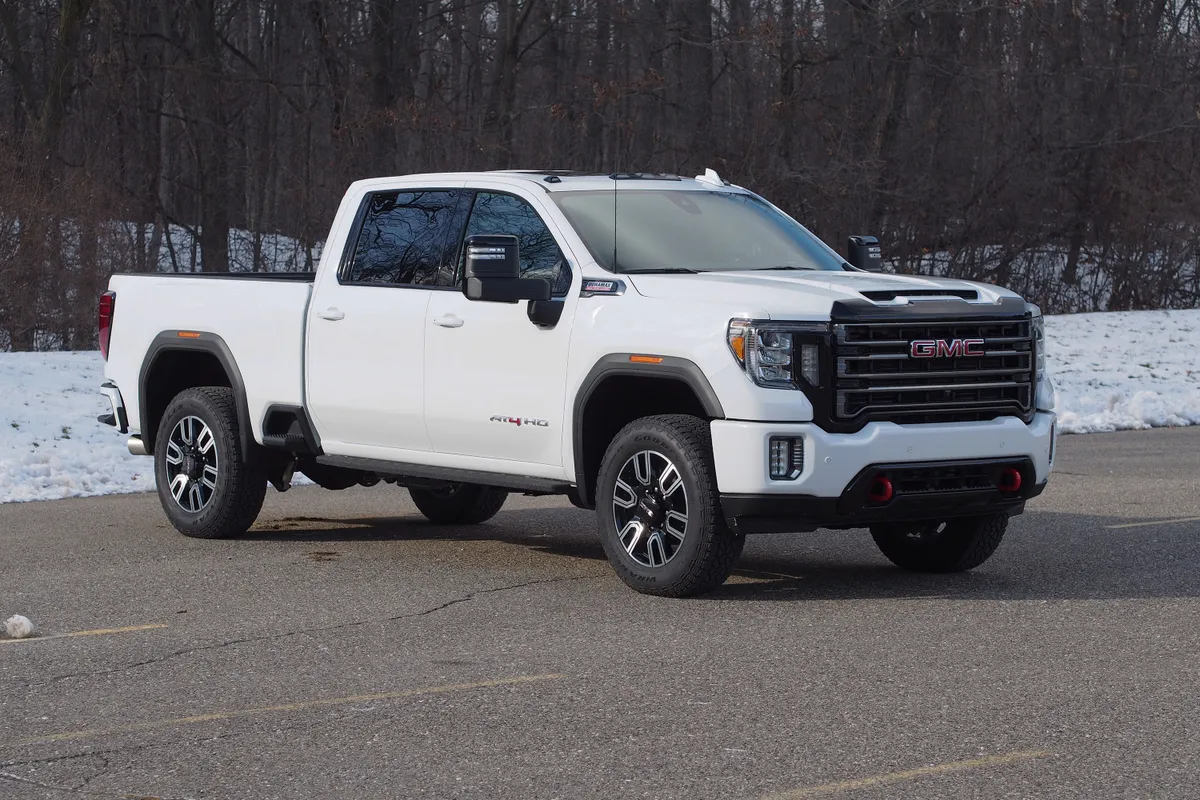
The available Magnetic Ride Control system provides continuously variable damping that responds to changing road conditions and trailer dynamics within milliseconds.
This active damping management helps prevent the oscillating motions that can develop between truck and trailer, maintaining stable tracking characteristics even during challenging driving conditions.
The Sierra HD’s engine calibration reflects GMC’s understanding that smooth power delivery is essential for maintaining trailer control. The 6.6-liter Duramax diesel engine features specific tuning that prioritizes linear torque application over peak power output, ensuring that throttle inputs result in predictable vehicle responses.
The engine’s sophisticated fuel injection system provides precise control over combustion characteristics, eliminating the power fluctuations that can disturb trailer tracking during acceleration and deceleration events.
Advanced driver assistance features specifically designed for towing applications set the Sierra HD apart from conventional heavy-duty trucks. The available Transparent Trailer View technology uses camera systems to create a virtual “see-through” trailer effect, allowing drivers to monitor traffic conditions behind the trailer as if the trailer were invisible.
This technology enhances safety during lane changes and highway merging, reducing the sudden steering inputs that can trigger trailer sway conditions.
GMC’s attention to trailer brake integration extends beyond simple proportional control to include predictive braking algorithms that anticipate stopping requirements based on GPS data and traffic conditions.
The system can pre-condition trailer brakes for upcoming grade changes or traffic scenarios, ensuring optimal brake readiness without the sudden engagement that can induce stability issues.
The integrated trailer brake controller also features automatic gain adjustment that adapts to different trailer weights and brake system characteristics.
Professional validation of Sierra HD capabilities comes from extensive use in demanding commercial applications where consistent towing performance is essential.
Contractors, agricultural operators, and recreational vehicle enthusiasts consistently report exceptional confidence when operating Sierra HD trucks in challenging towing scenarios, particularly praising the system’s refined operation and ability to maintain control during adverse conditions.
Also Read: 5 Sedans With Best Throttle Response And 5 That Are Sluggish
5. Toyota Tundra (with Tow Package)
Toyota’s Tundra represents a unique approach to towing excellence that emphasizes reliability, predictability, and long-term durability over maximum capacity ratings.
While the Tundra may not match the raw towing numbers of heavy-duty competitors, its sophisticated stability management systems and methodical engineering approach create a towing platform that excels in real-world applications where consistent performance and driver confidence are paramount.
The Tundra’s Toyota Safety Sense 2.0 system includes trailer-specific calibrations that demonstrate Toyota’s comprehensive approach to towing safety.
The system’s Vehicle Stability Control has been specifically tuned for trailer applications, incorporating algorithms that account for the changed vehicle dynamics when towing.
Unlike systems that react to stability issues, Toyota’s approach emphasizes prevention through continuous monitoring of vehicle behavior and proactive intervention when potentially destabilizing conditions are detected.
Toyota’s twin-turbo V6 engine strategy reflects their understanding that controlled power delivery is more important than maximum output for towing applications.
The 3.5-liter twin-turbo V6 produces 389 horsepower and 479 pound-feet of torque, but more significantly, it delivers this power through a carefully managed curve that prioritizes smooth acceleration and consistent power application.
The twin-turbo configuration provides excellent low-end torque without the sudden power surges that can disturb trailer tracking, while the sophisticated engine management system ensures predictable throttle response across all operating conditions. The Tundra’s chassis engineering demonstrates Toyota’s methodical approach to structural integrity and controlled compliance.
The frame utilizes high-strength steel construction with specific reinforcements at trailer hitch mounting points, but the design philosophy emphasizes balanced stiffness that provides excellent feedback while absorbing road irregularities that could be transmitted to the trailer. This approach prevents the overly rigid coupling that can amplify minor disturbances into significant stability issues.
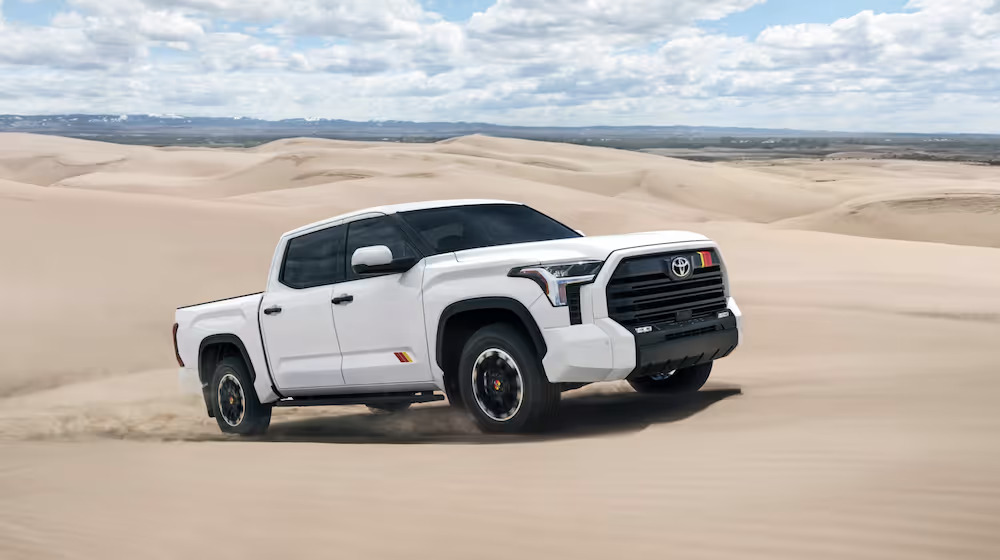
Toyota’s attention to transmission calibration for towing applications sets the Tundra apart from trucks that simply increase shift firmness in tow mode.
The 10-speed automatic transmission features sophisticated algorithms that predict towing requirements based on grade changes, traffic conditions, and trailer loading scenarios.
The transmission’s ability to maintain optimal engine RPM during varying load conditions ensures consistent power delivery that promotes trailer stability, while the integrated grade logic prevents excessive shifting that can disturb smooth power application.
The available Multi-Terrain Select system provides traction management capabilities that extend beyond simple all-wheel-drive operation to include specific modes optimized for towing in various conditions.
The system can adjust power distribution, throttle response, and stability control calibration based on surface conditions, ensuring optimal traction and control whether launching a boat from a slippery ramp or maintaining control during adverse weather towing scenarios.
Toyota’s approach to trailer brake integration emphasizes seamless coordination between truck and trailer braking systems through its integrated trailer brake controller.
The system provides proportional brake application that’s carefully calibrated to prevent the abrupt engagement that can trigger trailer sway, while also offering manual adjustment capabilities that allow fine-tuning for specific trailer characteristics.
The brake controller’s diagnostic capabilities can detect trailer brake system issues and alert the driver before they compromise safety. Real-world validation of Tundra’s towing capabilities comes from owners who prioritize reliability and predictable performance over maximum capacity.
Recreational vehicle enthusiasts and professional users consistently report exceptional confidence in the Tundra’s ability to maintain control during challenging towing conditions, particularly noting the system’s smooth operation and freedom from the intrusive interventions that can characterize some competitor systems.
5 Trucks with Poor Sway-Control Performance
These basic pickup truck configurations lack integrated sway control systems, leaving drivers to manage trailer stability manually through proper loading techniques and defensive driving practices.
Without electronic intervention systems, these trucks rely entirely on the driver’s skill and experience to recognize and correct developing sway conditions before they become dangerous.
Avoid slamming on the brakes, abruptly letting off the gas, or overcorrecting the steering. These maneuvers will cause the trailer to sway and possibly lose control, potentially resulting in a jackknife.
The absence of automated sway detection means that once trailer oscillation begins, it can quickly amplify without electronic correction, potentially leading to loss of control situations.
These vehicles require careful attention to proper tongue weight distribution, appropriate towing speeds, and immediate recognition of sway onset to maintain safe towing conditions.
Base trim levels often eliminate these safety systems to reduce costs, making proper trailer setup and experienced driving techniques critical for safe operation.
1. Nissan Titan
The Nissan Titan represents one of the most disappointing entries in the full-size truck segment when it comes to towing stability and sway control management.
Despite Nissan’s efforts to compete in the highly competitive truck market, the Titan suffers from fundamental engineering compromises that significantly impact its ability to manage trailer sway effectively, making it a concerning choice for serious towing applications.
The primary issue with the Titan’s sway control stems from its poorly calibrated Vehicle Dynamic Control system, which lacks the sophisticated algorithms found in more competent competitors.
The system’s response to trailer sway conditions is characterized by abrupt, heavy-handed interventions that often create more instability than they resolve.
When the system detects the onset of sway, its brake application strategy is crude and poorly timed, frequently applying excessive braking force to individual wheels without the nuanced control necessary for effective sway mitigation.
This aggressive intervention can amplify sway conditions, creating a feedback loop that makes the situation progressively worse. The Titan’s structural limitations contribute significantly to its poor towing performance.
The frame design, while adequate for light-duty applications, lacks the rigidity and strategic reinforcement necessary for heavy towing scenarios. The chassis exhibits excessive flex under load, which translates to imprecise trailer tracking and reduced feedback to both driver and electronic systems.
This structural compliance means that minor road irregularities and wind disturbances are amplified rather than absorbed, creating the unstable platform that promotes trailer sway development.
Nissan’s 5.6-liter V8 engine, while producing respectable power numbers on paper, delivers its output through a power curve that’s poorly suited for towing applications.
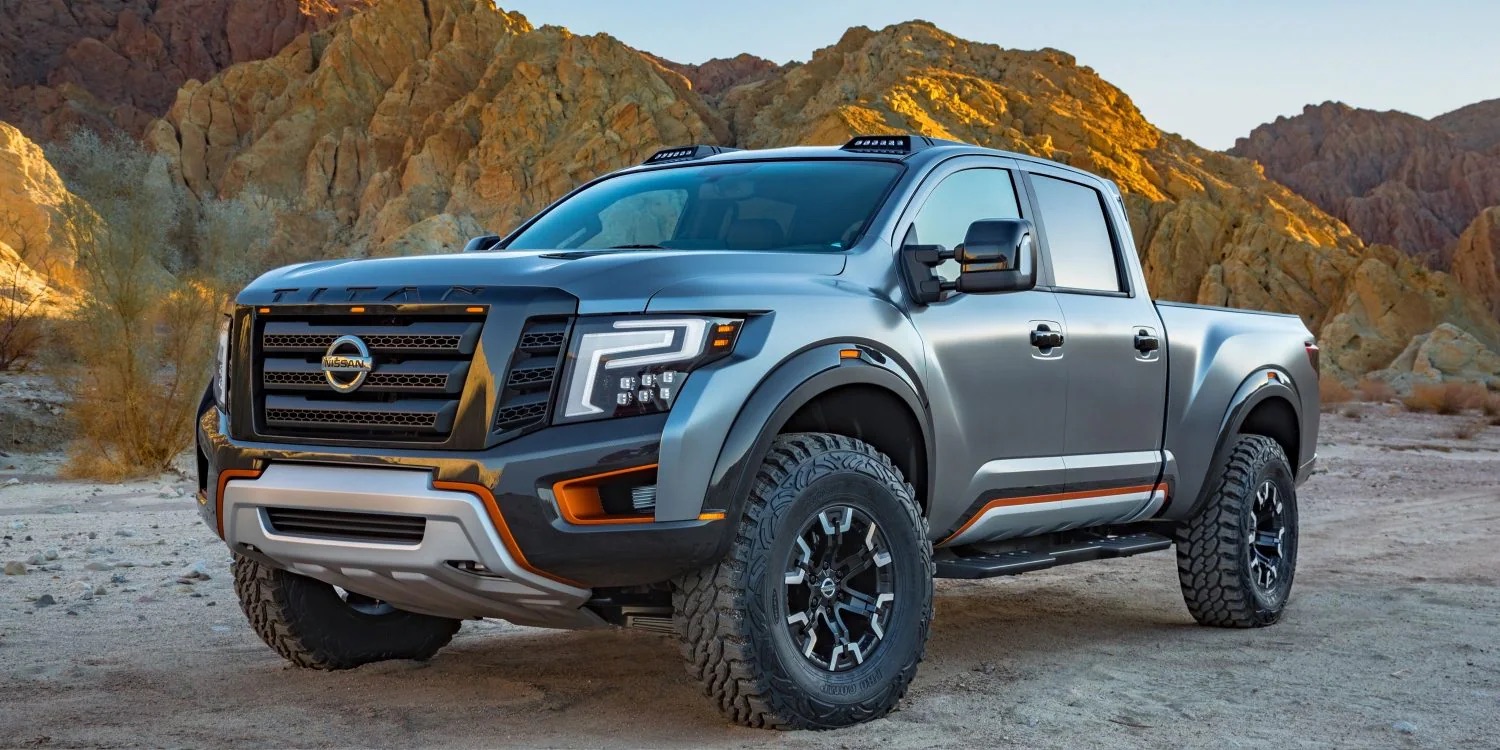
The engine’s torque delivery is characterized by significant fluctuations and dead spots that make smooth power application nearly impossible, particularly during the critical acceleration and deceleration phases where trailer stability is most vulnerable.
The engine’s throttle response is sluggish and unpredictable, making it difficult for drivers to make the precise power adjustments necessary for maintaining trailer control in challenging conditions.
The CVT transmission option represents a fundamental misunderstanding of towing requirements, as continuously variable transmissions are inherently unsuited for heavy-duty towing applications.
The CVT’s inability to provide fixed gear ratios means that engine loading is constantly changing, creating the power fluctuations that can trigger trailer sway.
The transmission’s programming prioritizes fuel economy over towing performance, resulting in excessive ratio changes that disturb smooth power delivery.
Even the conventional automatic transmission option suffers from poor calibration, with shift timing and firmness that’s inadequately matched to towing requirements.
Nissan’s approach to trailer brake integration demonstrates a concerning lack of attention to towing dynamics. The available trailer brake controller is a basic proportional system that lacks the sophisticated timing and force modulation capabilities found in more competent systems.
The controller’s calibration is crude, often applying trailer brakes too aggressively or with poor timing relative to truck brake application, creating the brake-induced sway that characterizes many Titan towing experiences.
The system lacks diagnostic capabilities and provides minimal feedback to help drivers optimize brake settings for specific trailers. Professional feedback from fleet operators and serious recreational users consistently identifies the Titan as problematic for towing applications beyond the most basic scenarios.
Reports of unexpected sway incidents, poor stability in crosswind conditions, and general lack of confidence-inspiring behavior are common themes in user experiences. The truck’s poor resale value in commercial applications reflects the market’s recognition of its limitations for serious work applications.
2. Honda Ridgeline
The Honda Ridgeline occupies a unique position in the truck market as a unibody-constructed vehicle that attempts to provide truck functionality with car-like characteristics, but this fundamental design philosophy creates significant compromises that make it particularly unsuitable for towing applications where sway control is critical.
The Ridgeline’s inherent structural and dynamic limitations make it one of the poorest choices available for any serious towing scenario. The Ridgeline’s unibody construction represents the fundamental flaw that undermines all aspects of its towing capability.
Unlike traditional body-on-frame trucks that provide the rigid, isolated platform necessary for effective trailer control, the Ridgeline’s integrated structure lacks the necessary rigidity and proper load distribution characteristics.
The unibody design means that towing forces are transmitted throughout the entire vehicle structure rather than being isolated to the frame rails, creating flex and compliance in areas where rigidity is essential for trailer stability.
This structural flexibility translates directly to imprecise trailer tracking and reduced ability to control sway once it develops. Honda’s all-wheel-drive system, while adequate for light-duty applications, is poorly suited for towing scenarios where consistent power delivery and traction management are essential.
The system’s torque distribution algorithms prioritize fuel economy and on-road handling over the towing stability requirements, resulting in power delivery characteristics that can contribute to trailer sway development.
The system lacks the low-range gearing and robust torque transfer capabilities necessary for controlled trailer launching and maneuvering in challenging conditions.
The Ridgeline’s 3.5-liter V6 engine, despite Honda’s reputation for engine excellence, is poorly matched to towing requirements both in terms of power output and delivery characteristics.
The engine produces adequate power for the truck’s unloaded operation but lacks the torque reserve necessary for maintaining stable power delivery when loaded with a trailer.
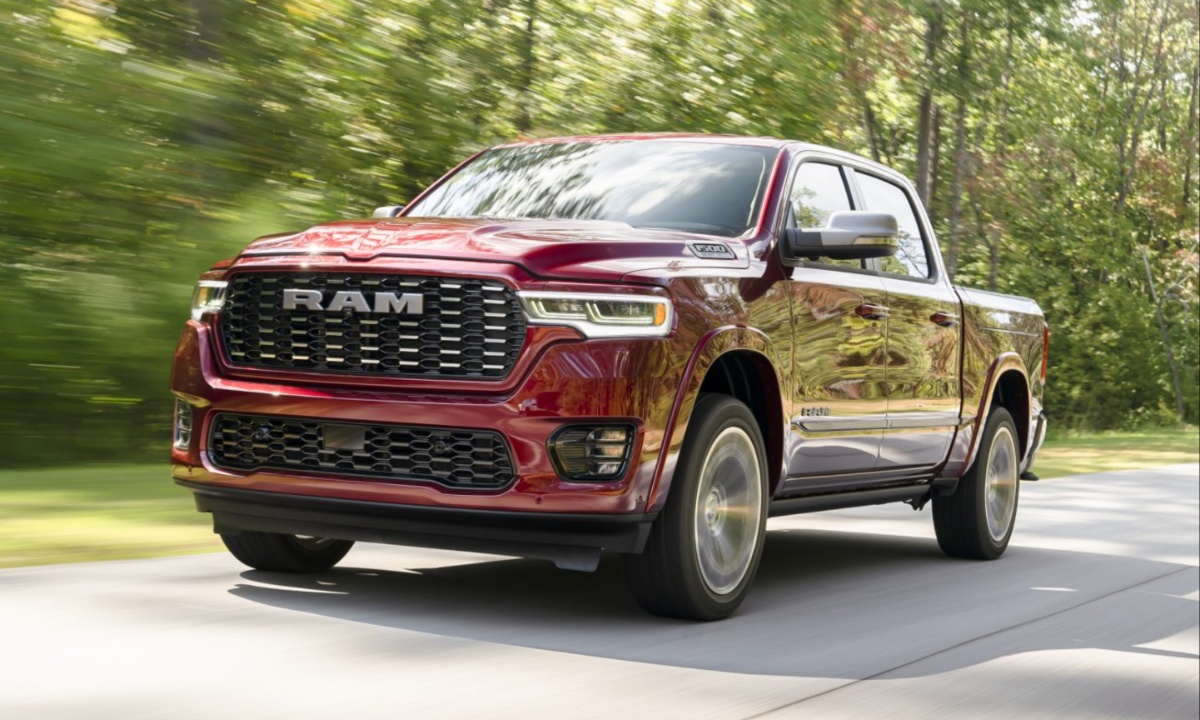
More significantly, the engine’s power curve and throttle response characteristics are optimized for efficiency rather than the smooth, predictable power application essential for trailer control.
The engine’s tendency toward abrupt power delivery changes can trigger sway conditions that the truck’s limited stability systems cannot effectively manage.
Honda’s approach to stability control in the Ridgeline reveals a fundamental misunderstanding of towing dynamics. The Vehicle Stability Assist system is calibrated for the unloaded vehicle’s characteristics and lacks the sophisticated algorithms necessary for trailer sway detection and mitigation.
When the system does intervene during towing scenarios, its responses are poorly calibrated for the combined vehicle-trailer dynamics, often applying corrections that are ineffective or even counterproductive.
The system’s inability to distinguish between normal towing dynamics and genuine stability threats leads to inappropriate interventions that can disturb trailer tracking.
The Ridgeline’s suspension system reflects Honda’s car-based engineering approach rather than the truck-specific requirements necessary for towing stability.
The independent rear suspension, while providing excellent empty-truck ride quality, lacks the load-carrying capacity and geometry control necessary when towing.
The suspension’s progressive rates are optimized for unloaded operation, resulting in excessive compression and poor geometry under trailer tongue loads. This suspension compression affects the truck’s pitch attitude, which directly impacts trailer stability by altering the critical tongue weight distribution.
Real-world feedback from Ridgeline owners who attempt towing consistently reveals the truck’s fundamental limitations. Even within its modest towing capacity rating, the Ridgeline exhibits poor stability characteristics, with many owners reporting uncomfortable sway behavior and a general lack of confidence when towing even moderate loads.
Professional evaluations consistently rank the Ridgeline among the poorest performers for towing applications, with particular criticism directed at its stability management and overall suitability for trailer operations.
3. Jeep Gladiator
The Jeep Gladiator represents a fascinating but fundamentally flawed approach to combining legendary off-road capability with truck functionality, resulting in significant compromises that severely impact its towing stability and sway control performance.
While the Gladiator excels in off-road scenarios, its design priorities and engineering choices create substantial challenges for safe, controlled towing operations that make it unsuitable for serious trailer applications.
The Gladiator’s short wheelbase represents the most significant factor undermining its towing stability. At just 137 inches, the wheelbase is substantially shorter than full-size trucks optimized for towing, creating fundamental physics problems that no amount of electronic intervention can fully overcome.
The short wheelbase means that trailer-induced forces have greater leverage over the truck’s dynamics, making it inherently more susceptible to sway initiation and more difficult to control once sway develops.
This geometric disadvantage is particularly pronounced when towing longer trailers, where the moment arm effects become even more problematic.
Jeep’s Electronic Stability Control system in the Gladiator, while capable in off-road applications, lacks the sophisticated calibration necessary for effective trailer sway management.
The system’s algorithms are optimized for the truck’s off-road mission rather than towing stability, resulting in intervention strategies that are poorly suited for highway towing scenarios.
When the system detects instability while towing, its response characteristics often create more disturbance than correction, with brake applications that can amplify rather than dampen sway oscillations.
The Gladiator’s 3.6-liter V6 engine, while providing adequate power for the truck’s primary off-road mission, is poorly suited for towing applications both in terms of output characteristics and delivery.
The engine lacks the low-end torque necessary for smooth trailer launching and grade climbing, forcing frequent downshifts that disturb consistent power delivery.
More problematically, the engine’s power curve includes significant dead spots and irregular torque delivery that make precise throttle control difficult, particularly during the critical phases of towing, where smooth power application is essential for maintaining trailer stability.
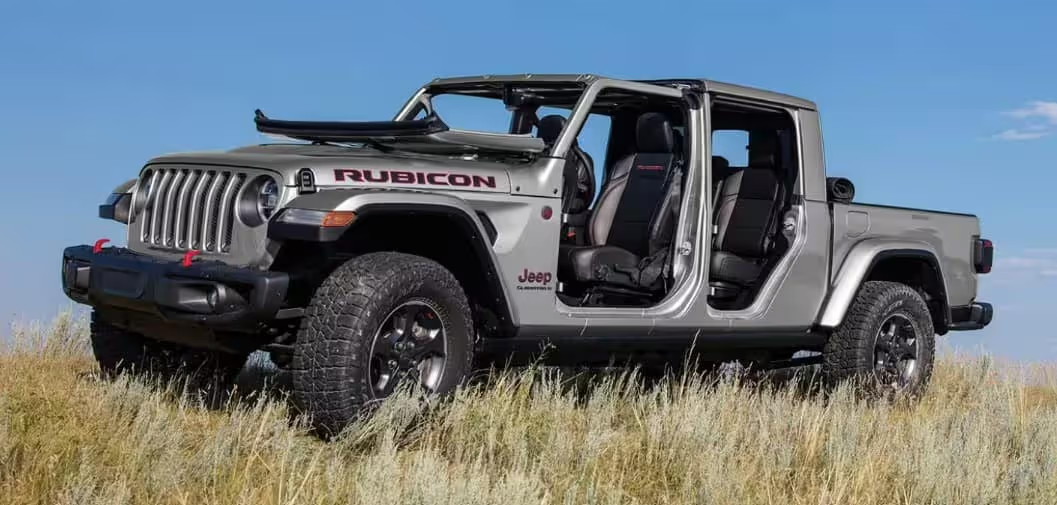
The available 3.0-liter EcoDiesel engine option provides better torque characteristics but introduces its own set of problems for towing applications.
The diesel’s turbocharger lag creates inconsistent power delivery that can be particularly problematic during the precise throttle modulation required for trailer control.
The engine’s emissions control systems can also cause power interruptions during regeneration cycles, creating unexpected power variations that can trigger sway conditions at inopportune moments.
The Gladiator’s suspension system reflects its off-road priorities at the expense of towing stability. The solid front axle configuration, while excellent for rock crawling and extreme terrain, creates significant challenges for highway towing.
The solid axle’s unsprung weight and less precise steering geometry make the truck more susceptible to road irregularities and wind disturbances that can initiate trailer sway.
The rear suspension, while robust, lacks the progressive load-handling characteristics necessary for maintaining stable geometry under varying trailer tongue weights.
Jeep’s approach to trailer brake integration demonstrates limited understanding of towing dynamics. The available trailer brake controller is a basic proportional system that lacks the sophisticated timing and force modulation found in more capable systems.
The controller’s calibration options are limited, and it provides minimal diagnostic feedback to help optimize brake coordination. The system’s integration with the truck’s advanced braking systems is poor, often resulting in brake timing mismatches that can induce sway rather than prevent it.
The Gladiator’s aerodynamic design prioritizes off-road functionality over highway efficiency, creating significant problems for towing stability. The truck’s upright windshield, exposed spare tire, and overall boxy profile generate substantial turbulence that affects trailer behavior at highway speeds.
The removable doors and roof options, while enhancing the open-air experience, create additional aerodynamic disturbances that can contribute to trailer instability.
Even with all panels in place, the truck’s aerodynamic inefficiency impacts cooling system performance during heavy towing, potentially leading to overheating issues that can affect stability system operation.
The convertible top and removable door systems create structural compromises that affect the truck’s rigidity when configured for open-air operation.
Towing with the top down or doors removed significantly reduces chassis stiffness, making the truck even more susceptible to trailer-induced instability.
The structural flex introduced by these configurations can create feedback delays that impair both driver control and electronic stability system effectiveness.
Technology integration in the Gladiator focuses on off-road applications rather than towing support. The truck lacks the comprehensive towing assistance features found in more capable vehicles, with limited camera systems, minimal trailer monitoring capabilities, and poor integration between towing-related systems.
The Uconnect infotainment system provides a basic trailer brake controller interface but lacks the sophisticated monitoring and diagnostic capabilities essential for serious towing applications.
Real-world experience with Gladiator towing consistently reveals the truck’s fundamental limitations. Owners report significant stability issues even when operating within the published towing capacity, with particular problems in crosswind conditions and during highway speed operation.
The truck’s short wheelbase and high center of gravity create a combination that makes confident towing nearly impossible in challenging conditions, leading many owners to abandon towing activities altogether rather than accept the associated risks.
4. Chevrolet Colorado/GMC Canyon
The Chevrolet Colorado and GMC Canyon represent mid-size trucks that attempt to provide reasonable towing capability in a more manageable package, but their fundamental design limitations and poor stability system calibration make them problematic choices for any serious towing application.
These trucks suffer from engineering compromises that prioritize other attributes over towing stability, resulting in vehicles that are unsuitable for confident trailer operation.
The Colorado and Canyon’s mid-size proportions create inherent physics challenges that significantly impact towing stability. The shorter wheelbase and lighter overall weight mean that trailer-induced forces have disproportionate influence over the truck’s dynamics, making these vehicles inherently more susceptible to sway initiation and more difficult to control once instability develops.
The trucks’ lower mass provides less inertial resistance to trailer disturbances, meaning that wind gusts, passing vehicles, and road irregularities have greater impact on overall combination stability.
General Motors’ StabiliTrak system in these mid-size trucks lacks the sophisticated calibration found in their heavy-duty counterparts. The stability control algorithms are poorly adapted for towing scenarios, with intervention strategies that often create more disturbance than correction.
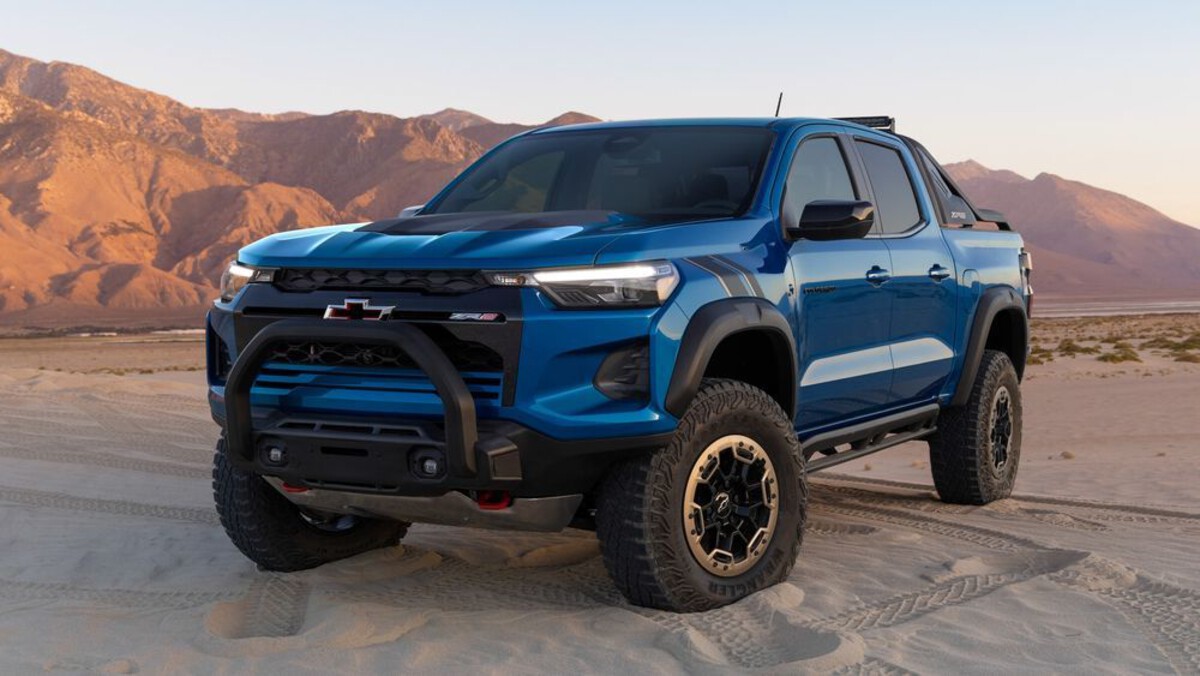
When the system detects potential sway conditions, its brake application strategy is crude and poorly timed, frequently applying excessive force that can amplify oscillations rather than dampen them.
The system’s inability to distinguish between normal towing dynamics and genuine threats leads to inappropriate interventions that disturb trailer tracking.
The available engine options in both trucks demonstrate a fundamental misunderstanding of towing power requirements. The base 2.5-liter four-cylinder engine is completely inadequate for any meaningful towing application, lacking both the power output and torque characteristics necessary for stable trailer operation.
The available 3.6-liter V6, while providing better performance, still lacks the low-end torque and smooth power delivery essential for maintaining trailer control during acceleration and grade changes.
The engine’s power curve includes significant irregularities that make precise throttle control difficult during critical towing maneuvers. Real-world feedback from Colorado and Canyon owners consistently reveals significant limitations for towing applications.
Even when operating within published capacity ratings, these trucks exhibit poor stability characteristics, with many owners reporting uncomfortable sway behavior and a general lack of confidence when towing. The trucks’ fundamental design compromises make them unsuitable for anything beyond the most basic, occasional towing scenarios.
5. Ford Ranger
The Ford Ranger represents a disappointing return to the mid-size truck market, with towing capabilities that fall significantly short of expectations and stability characteristics that make it unsuitable for serious trailer applications.
Despite Ford’s extensive experience with towing technology in their larger trucks, the Ranger suffers from fundamental engineering compromises that severely impact its ability to manage trailer sway effectively.
The Ranger’s platform limitations create the foundation for its poor towing performance. The truck’s relatively short wheelbase and light overall weight make it inherently susceptible to trailer-induced instability, with insufficient mass and geometric advantage to resist the forces that create sway conditions.
The platform’s origins as a global mid-size truck designed for diverse markets mean that towing stability was not a primary design consideration, resulting in fundamental compromises that cannot be overcome through electronic intervention alone.
Ford’s approach to stability control in the Ranger reveals significant gaps compared to its heavy-duty truck expertise. The Electronic Stability Control system lacks the sophisticated algorithms and calibration refinement found in the F-Series, with intervention strategies that are poorly suited for towing scenarios.
When the system detects potential instability while towing, its responses are often too aggressive or poorly timed, creating corrections that can amplify rather than dampen sway oscillations.
The system’s inability to properly distinguish between normal towing dynamics and genuine stability threats leads to intrusive interventions that disturb smooth trailer tracking.
The Ranger’s sole engine option, a 2.3-liter turbocharged four-cylinder, represents a fundamental mismatch for towing applications. While the engine produces reasonable power numbers on paper, its delivery characteristics are poorly suited for trailer stability requirements.
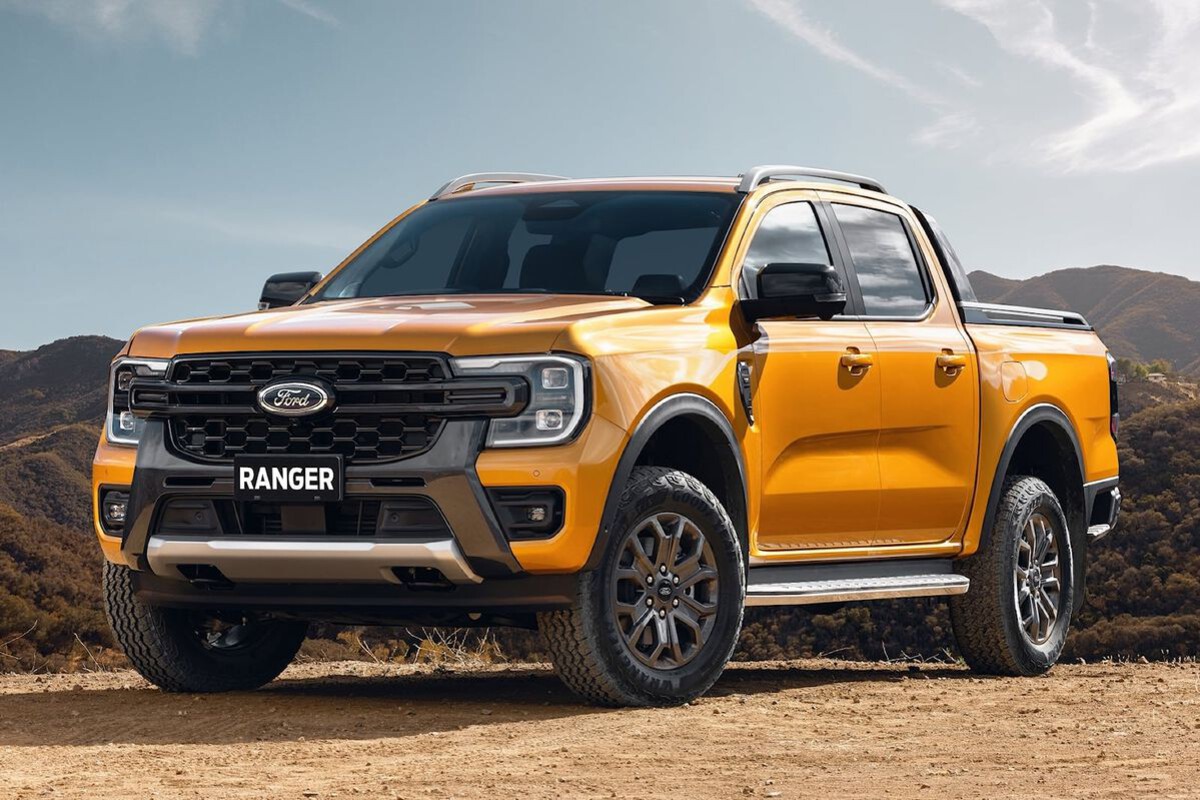
The turbocharger lag creates inconsistent power delivery that makes precise throttle control difficult, particularly during the critical acceleration and deceleration phases where trailer stability is most vulnerable.
The engine’s relatively small displacement means it must work harder to maintain performance when towing, leading to thermal stress and potential power reductions that can affect stability.
The engine’s power curve includes significant irregularities and dead spots that make smooth power application nearly impossible when towing. The turbocharger’s boost characteristics create abrupt power delivery changes that can trigger sway conditions, while the engine’s limited torque reserve means that maintaining consistent power output during grade changes or acceleration events is challenging.
The engine’s noise and vibration characteristics also interfere with the driver’s ability to detect subtle feedback cues that indicate developing trailer problems.
Ford’s transmission calibration in the Ranger reflects priorities that conflict with towing stability requirements. The 10-speed automatic transmission, while sophisticated in design, is programmed for fuel economy rather than towing performance.
The transmission exhibits excessive shifting when towing, constantly hunting for optimal ratios in ways that disturb smooth power delivery essential for trailer stability. The tow/haul mode provides minimal improvement, simply altering shift points without addressing the fundamental calibration issues that affect towing dynamics.
The Ranger’s suspension system demonstrates the compromises inherent in its mid-size platform. The rear suspension lacks the load-carrying capacity and progressive-rate characteristics necessary for maintaining stable geometry under trailer tongue loads.
Even moderate tongue weights can overwhelm the suspension system, creating rear squat that negatively affects weight distribution and overall stability. The suspension’s calibration prioritizes empty-truck ride quality over loaded performance, resulting in poor control characteristics when towing.
Real-world experience with Ranger towing consistently demonstrates the truck’s fundamental limitations. Owners report significant stability issues even when operating well within published towing capacities, with particular problems in crosswind conditions and during highway operation.
The truck’s platform compromises make confident towing nearly impossible in challenging conditions, leading many owners to seek alternatives for their towing needs rather than accept the associated risks and limitations.
Also Read: 5 Sedans With Best Throttle Response And 5 That Are Sluggish
